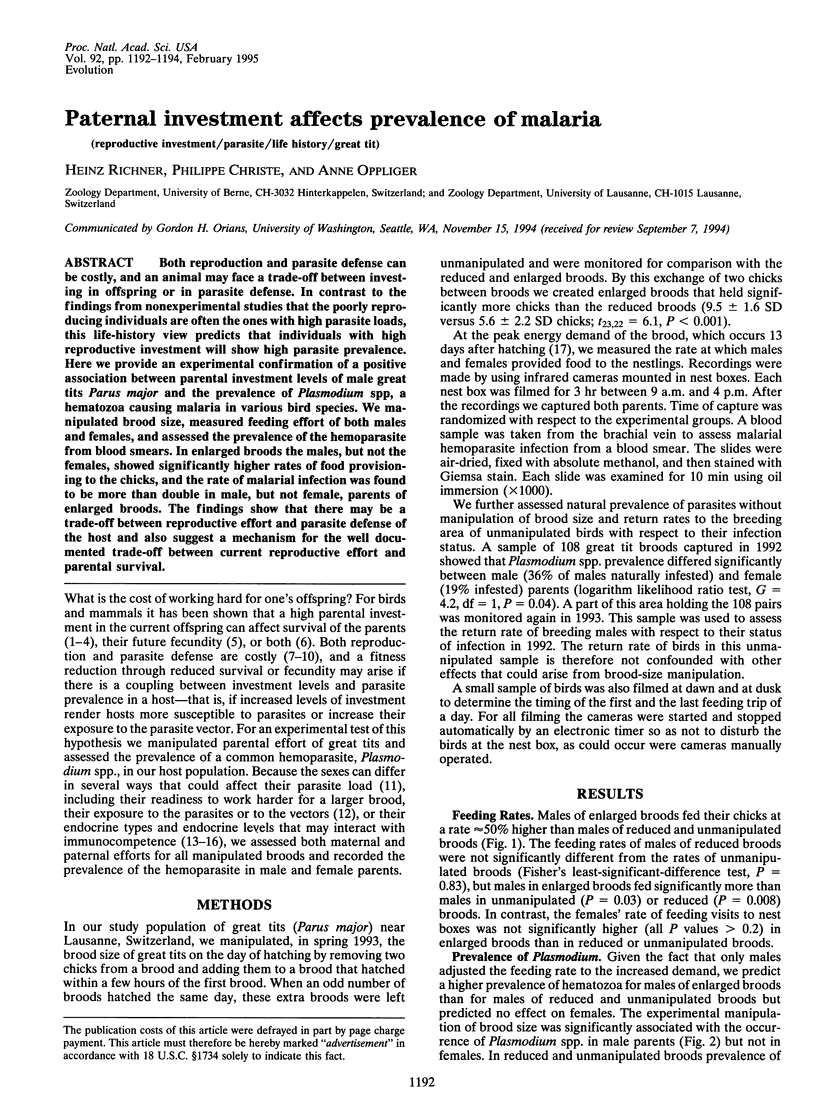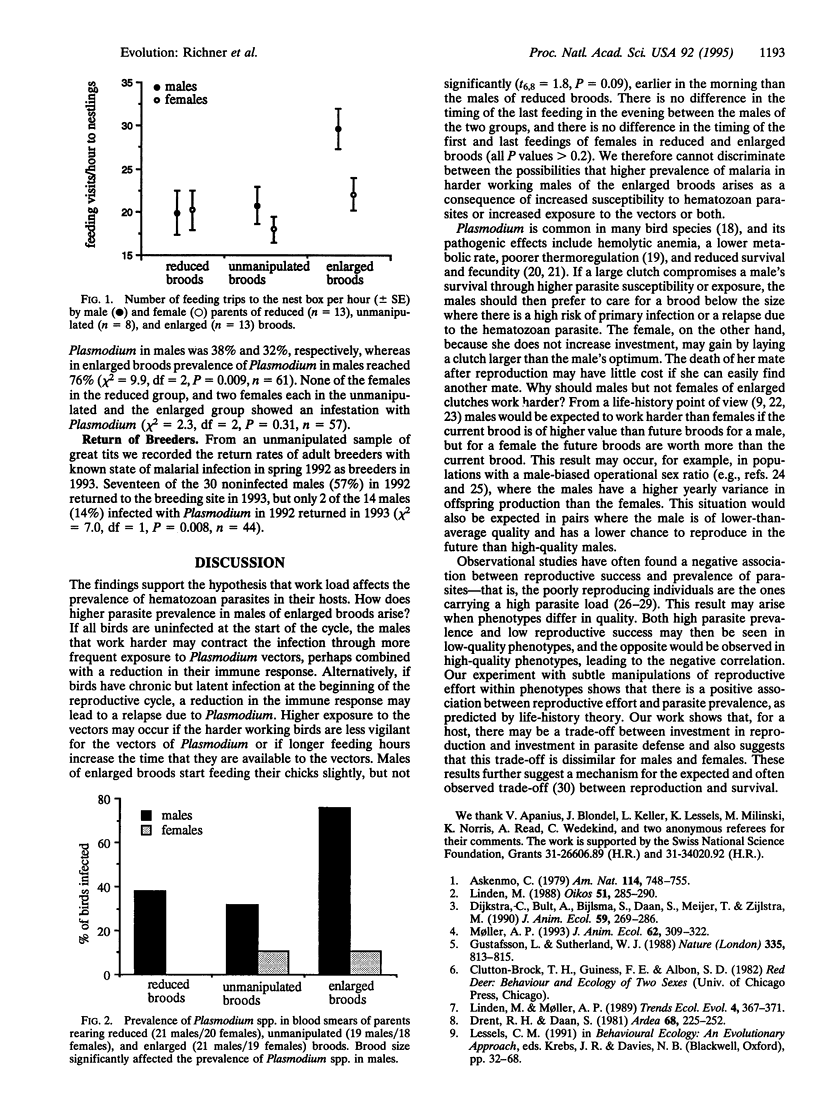Abstract
Both reproduction and parasite defense can be costly, and an animal may face a trade-off between investing in offspring or in parasite defense. In contrast to the findings from nonexperimental studies that the poorly reproducing individuals are often the ones with high parasite loads, this life-history view predicts that individuals with high reproductive investment will show high parasite prevalence. Here we provide an experimental confirmation of a positive association between parental investment levels of male great tits Parus major and the prevalence of Plasmodium spp, a hematozoa causing malaria in various bird species. We manipulated brood size, measured feeding effort of both males and females, and assessed the prevalence of the hemoparasite from blood smears. In enlarged broods the males, but not the females, showed significantly higher rates of food provisioning to the chicks, and the rate of malarial infection was found to be more than double in male, but not female, parents of enlarged broods. The findings show that there may be a trade-off between reproductive effort and parasite defense of the host and also suggest a mechanism for the well documented trade-off between current reproductive effort and parental survival.
Full text
PDF


Selected References
These references are in PubMed. This may not be the complete list of references from this article.
- Bundy D. A. Gender-dependent patterns of infections and disease. Parasitol Today. 1988 Jul;4(7):186–189. doi: 10.1016/0169-4758(88)90076-2. [DOI] [PubMed] [Google Scholar]
- Hayworth A. M., van Riper C., 3rd, Weathers W. W. Effects of Plasmodium relictum on the metabolic rate and body temperature in canaries (Serinus canarius). J Parasitol. 1987 Aug;73(4):850–853. [PubMed] [Google Scholar]
- Zuk M. Reproductive strategies and disease susceptibility: an evolutionary viewpoint. Parasitol Today. 1990 Jul;6(7):231–233. doi: 10.1016/0169-4758(90)90202-f. [DOI] [PubMed] [Google Scholar]


